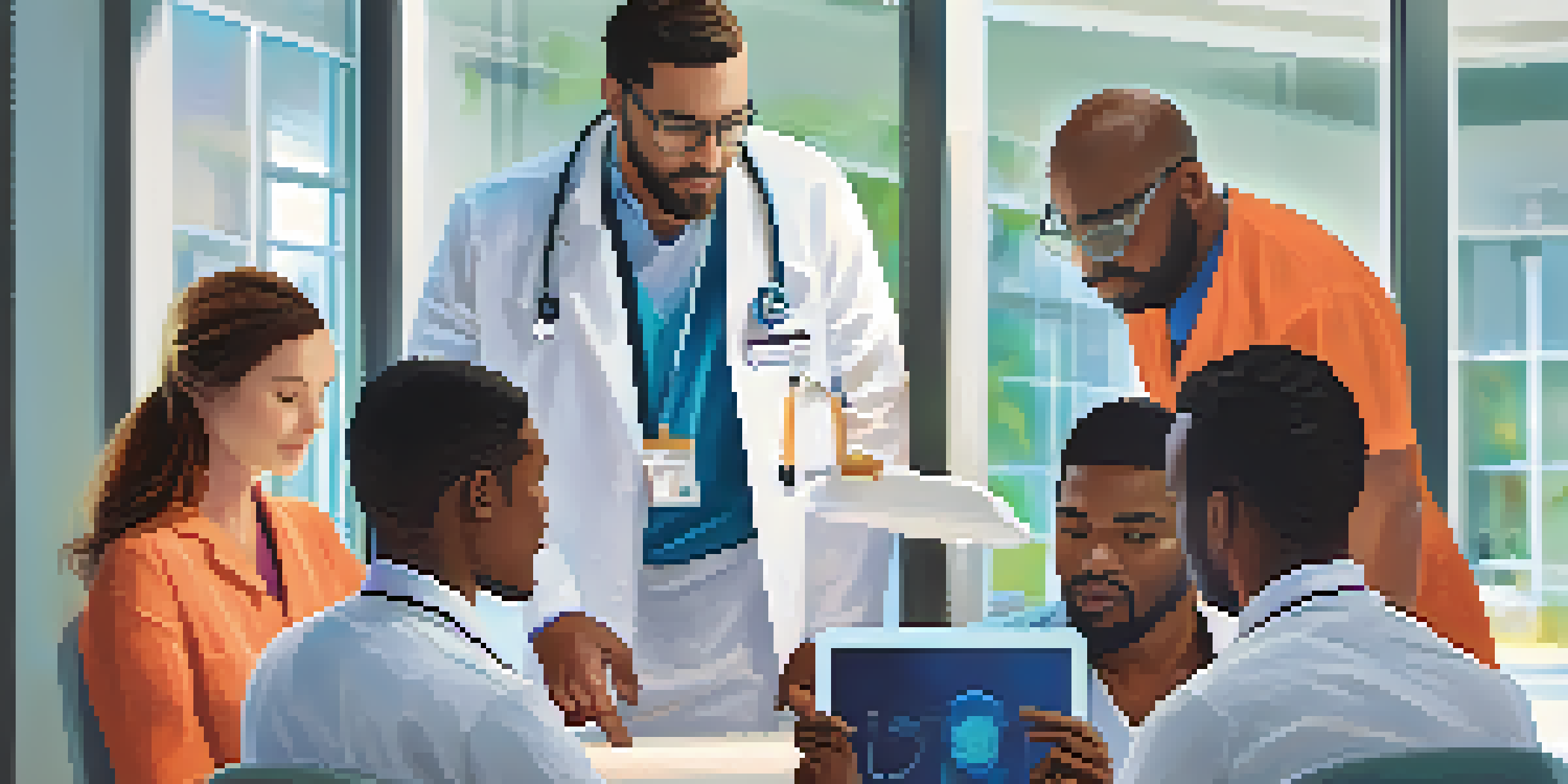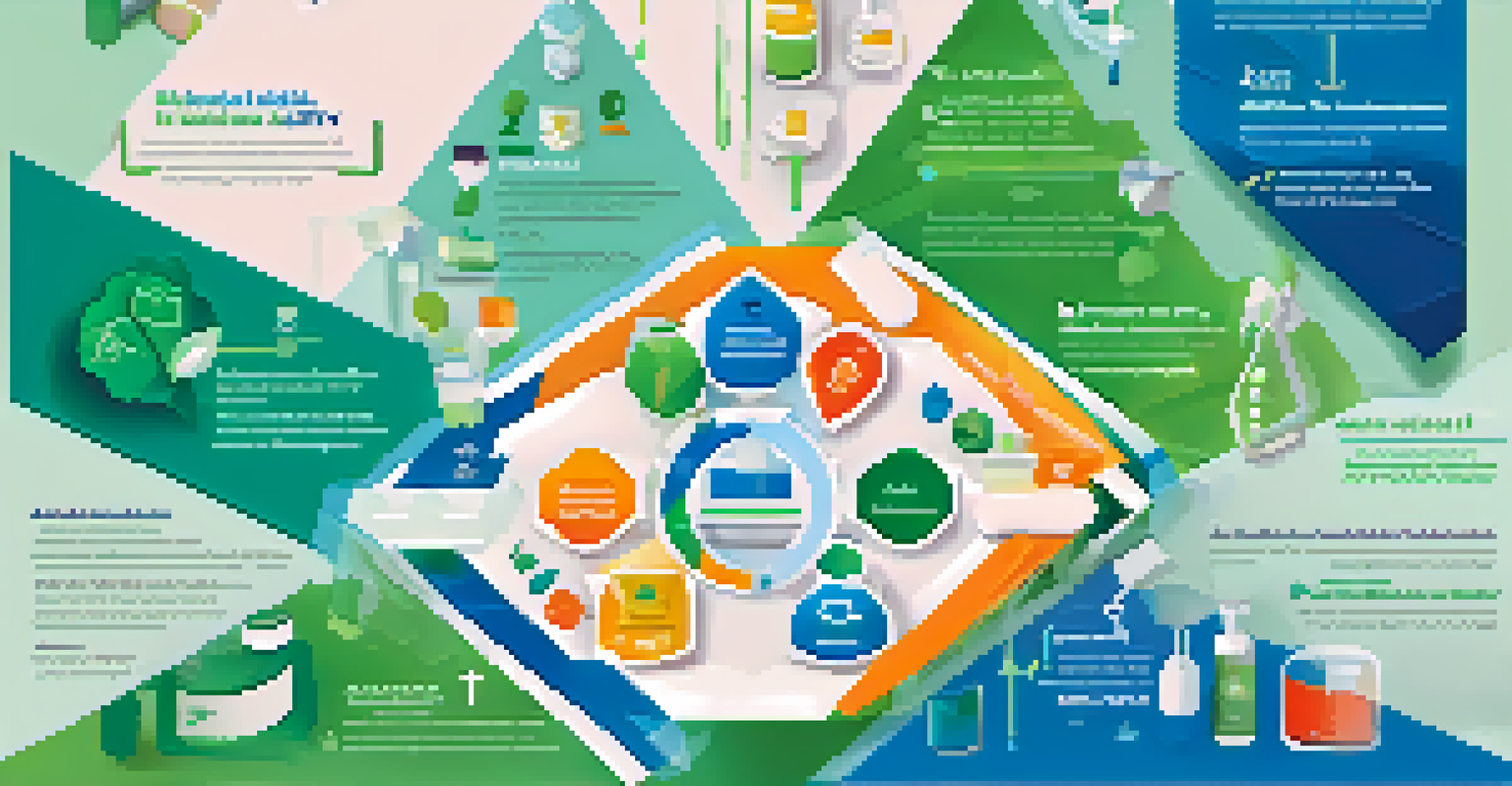Medication Errors: Prevention Strategies for Healthcare Teams

Understanding Medication Errors and Their Impact
Medication errors occur when there's a mistake in prescribing, dispensing, or administering medications. These errors can lead to serious patient harm, increased healthcare costs, and even fatalities. Understanding the various types of medication errors is crucial for healthcare teams aiming to enhance patient safety.
To err is human, but to really foul things up you need a computer.
Common examples include administering the wrong dosage, using inappropriate routes, or confusing medications with similar names. Such errors highlight the need for vigilance in the healthcare environment. By recognizing these mistakes, teams can take proactive steps to prevent them in the future.
The impact of medication errors extends beyond the immediate health consequences. They can erode patient trust and lead to potential legal ramifications for healthcare providers. Therefore, it's essential for teams to be aware of these implications and prioritize effective prevention strategies.
The Role of Communication in Preventing Errors
Effective communication is the backbone of any successful healthcare team. Clear and concise information exchange among team members can significantly reduce the risk of medication errors. This includes verbal communication, written orders, and electronic records.

For instance, using standardized language and terminology can minimize misunderstandings. When everyone on the team is on the same page, the likelihood of errors decreases. Regular team meetings and debriefings can also provide opportunities to clarify information and discuss potential concerns.
Preventing Errors Through Communication
Effective communication among healthcare team members is essential to reducing the risk of medication errors.
Furthermore, encouraging an open culture where team members feel safe to voice their concerns is vital. When healthcare professionals can speak up without fear of retribution, potential errors can be caught before they affect patients. This proactive approach fosters a collaborative environment focused on safety.
Implementing Technology to Enhance Safety
Technology plays a pivotal role in reducing medication errors. Electronic health records (EHRs), computerized physician order entry (CPOE), and barcode medication administration systems are just a few tools that can enhance accuracy in medication management. These systems help to streamline processes and reduce human error.
The greatest danger in times of turbulence is not the turbulence; it is to act with yesterday's logic.
For example, CPOE systems can alert prescribers about potential drug interactions or allergies, ensuring safer prescribing practices. Additionally, barcode systems can verify that the right patient receives the correct medication at the right time. This technological integration can be a game-changer for healthcare teams.
However, it's important to remember that technology is not a panacea. Regular training and updates are essential to ensure that all team members are proficient in using these tools effectively. By combining technology with human oversight, teams can create a robust safety net against medication errors.
Standardizing Medication Processes Across Teams
Standardization of medication processes is key to minimizing errors. By adopting uniform protocols for prescribing, dispensing, and administering medications, healthcare teams can reduce variability and confusion. This consistency is especially important in busy environments like hospitals.
For instance, using standard order sets for common conditions can streamline the prescribing process. These sets eliminate guesswork and ensure that all team members follow the same guidelines. This not only enhances safety but also improves efficiency in patient care.
Technology Enhances Medication Safety
Integrating technology like electronic health records and barcode systems plays a crucial role in minimizing medication errors.
Additionally, regular reviews and updates of these standardized processes are essential. As new medications and treatment guidelines emerge, keeping protocols current ensures that teams are always operating with the best practices in mind. This commitment to standardization is crucial for ongoing patient safety.
Training and Education: Building a Safety Culture
Ongoing training and education are vital components of a safety culture in healthcare. By ensuring that all team members are well-informed about medication management protocols, the likelihood of errors decreases significantly. This education should encompass both initial training and ongoing professional development.
For instance, workshops and simulations can provide hands-on experience in recognizing and preventing medication errors. These training sessions can also foster teamwork and communication skills, which are essential in high-pressure situations. Engaging in realistic scenarios prepares teams to respond effectively to potential challenges.
Moreover, promoting a culture of continuous learning encourages team members to stay updated on best practices and emerging trends. When healthcare professionals are committed to their education, they are better equipped to prioritize patient safety in their daily routines. This culture ultimately leads to a safer environment for everyone.
Encouraging Reporting and Learning from Errors
An essential aspect of preventing medication errors is encouraging the reporting of near misses and actual errors. Healthcare teams must create an environment where reporting is seen as a positive action rather than a punitive one. This opens the door for valuable insights into the causes of errors and how to prevent them in the future.
For instance, implementing a non-punitive reporting system can empower team members to share their experiences without fear. By analyzing these reports, teams can identify patterns and develop strategies to address vulnerabilities in their processes. This proactive approach fosters a culture of learning and improvement.
Involving Patients in Safety Practices
Engaging patients in their medication management can significantly reduce the risk of errors and improve health outcomes.
Additionally, regular sharing of lessons learned from reported errors can enhance overall team awareness. When everyone is informed about past mistakes and the steps taken to prevent them, it encourages collective responsibility for patient safety. This continuous feedback loop is crucial for creating a resilient healthcare team.
Engaging Patients in Their Medication Safety
Patients play a vital role in their own medication safety. Engaging them in the process can significantly reduce the risk of errors. When patients are well-informed about their medications, they can help identify potential issues before they escalate.
For example, encouraging patients to ask questions about their prescriptions, including dosage and potential side effects, fosters a collaborative approach to their care. Providing clear information and resources empowers patients to take an active role in their treatment. This partnership can lead to better health outcomes.

Moreover, involving patients in medication reconciliation during transitions of care can further enhance safety. This process ensures that all medications are reviewed and verified during hospital admissions, transfers, and discharges. By actively participating, patients help verify their medication history, which is crucial for preventing errors.
Conclusion: A Collaborative Approach to Error Prevention
Preventing medication errors requires a collaborative effort from the entire healthcare team. By focusing on communication, technology, standardization, education, and patient engagement, teams can create a safer environment for everyone involved. This multifaceted approach not only reduces errors but also enhances overall patient care.
Moreover, fostering a culture of continuous improvement ensures that teams remain vigilant in their efforts to minimize risks. By learning from past mistakes and sharing knowledge, healthcare professionals can adapt to new challenges and improve their practices. This commitment to safety is essential in today’s complex healthcare landscape.
Ultimately, the goal is to prioritize patient safety above all else. When healthcare teams work together, leveraging their collective knowledge and skills, the likelihood of medication errors decreases significantly, leading to better health outcomes for patients. Together, we can create a safer healthcare system.